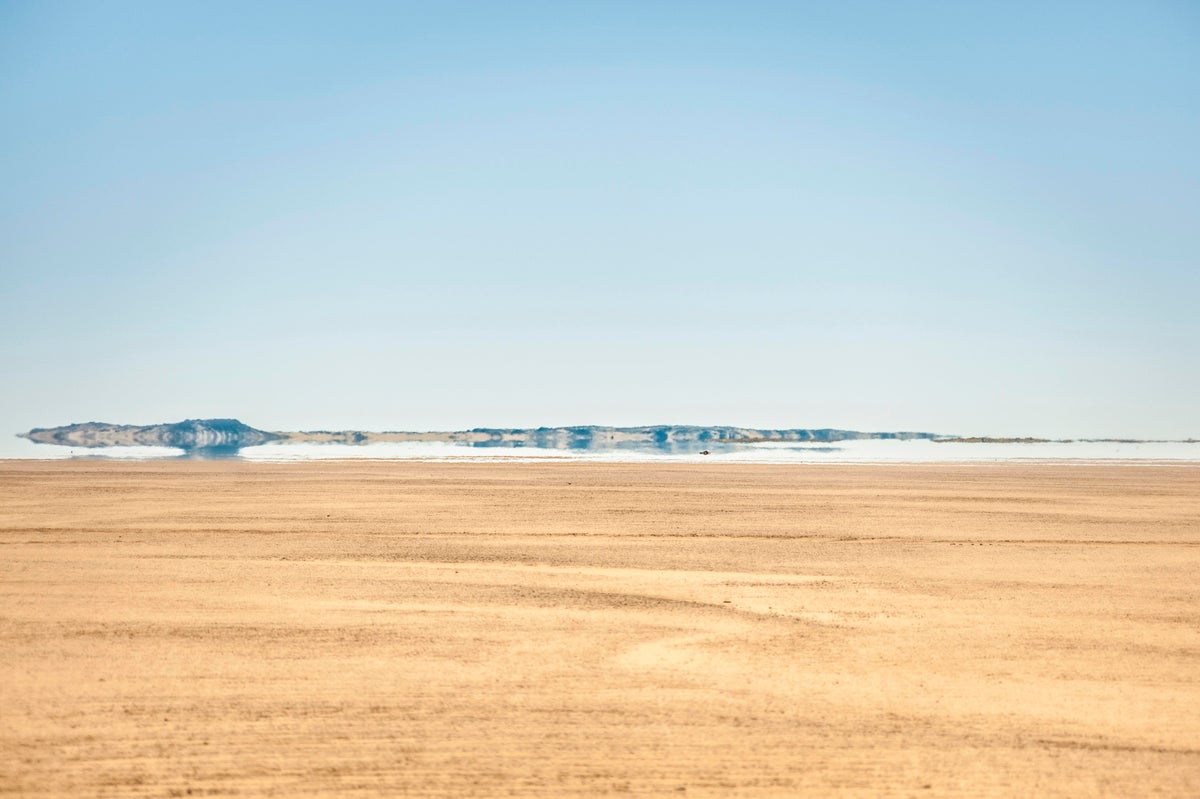Mirages: The Science of Optical Illusions in Nature...!!!
A mirage is an intriguing natural phenomenon that creates optical illusions, making objects appear displaced, distorted, or even conjuring nonexistent images. Mirages are a type of atmospheric refraction and occur when light rays bend due to variations in air temperature and density. The word "mirage" comes from the French term "se mirer," meaning "to be reflected."

Formation of Mirages
Mirages are caused by the bending (refraction) of light rays as they pass through layers of air with different temperatures. This bending happens because light travels at different speeds in air of varying temperatures and densities. There are two primary types of mirages: inferior and superior.
1.Inferior Mirage: This type of mirage occurs when the ground is extremely hot, and the air directly above it is cooler. The classic example of an inferior mirage is the "water on the road" effect seen on hot days. As light travels from the cooler air to the hotter air near the surface, it bends upward, causing the sky to appear on the ground and creating the illusion of water. Inferior mirages are commonly observed in deserts or on sunlit highways.
2.Superior Mirage: A superior mirage occurs when the air near the ground is cooler than the air above it. This situation often arises over large bodies of water, such as oceans or lakes, where the cold water cools the air immediately above it. In this case, light bends downward as it moves from the warmer air to the cooler air near the surface. Superior mirages can cause objects below the horizon to appear above it, sometimes producing an upside-down image. These mirages are more common in polar regions and during cold weather conditions.
Types of Mirages
Mirages can create a range of visual effects, some of which are quite spectacular. Here are a few examples:
1.Fata Morgana: This complex form of superior mirage creates multiple, vertically stacked images that can appear distorted or elongated. Named after the Arthurian sorceress Morgan le Fay, Fata Morgana mirages are often seen over horizons at sea, in polar regions, or over flat landscapes. These mirages can make objects appear as towering structures or floating cities, adding to their mystique and allure.
2.Desert Mirage: Often depicted in popular culture, desert mirages are typically inferior mirages that create the illusion of water in arid environments. Thirsty travelers may be deceived into seeing nonexistent lakes or ponds, a phenomenon that has fueled numerous myths and legends.
3.Polar Mirage: In polar regions, superior mirages can cause dramatic visual distortions. Ships, icebergs, or distant landmasses may appear elevated above the horizon or even inverted. These phenomena are caused by the extreme temperature gradients between the cold surface and the warmer air above.

Scientific Explanation
The formation of mirages can be explained using the principles of refraction and Snell's Law, which describes how light bends when it passes from one medium to another with a different refractive index. When light travels through layers of air with varying temperatures, its speed changes, causing it to bend. The amount of bending depends on the temperature gradient and the angle at which the light enters each layer.
In an inferior mirage, the light bends upward due to the rapid decrease in air density near the hot surface. In a superior mirage, the light bends downward because the cold surface air is denser than the air above it. The resulting images are optical illusions, not reflections, as the light rays do not actually bounce off surfaces but are refracted through the air.
Mirages are captivating natural phenomena that showcase the intriguing interplay between light and atmospheric conditions. These optical illusions have fascinated humans for centuries, inspiring myths, legends, and scientific curiosity. Understanding the science behind mirages not only enhances our appreciation of these visual wonders but also highlights the complexity and beauty of the natural world. Whether seen in the scorching desert, over the open ocean, or in the icy polar regions, mirages continue to mesmerize and remind us of the remarkable ways in which light interacts with our environment
What's Your Reaction?

















